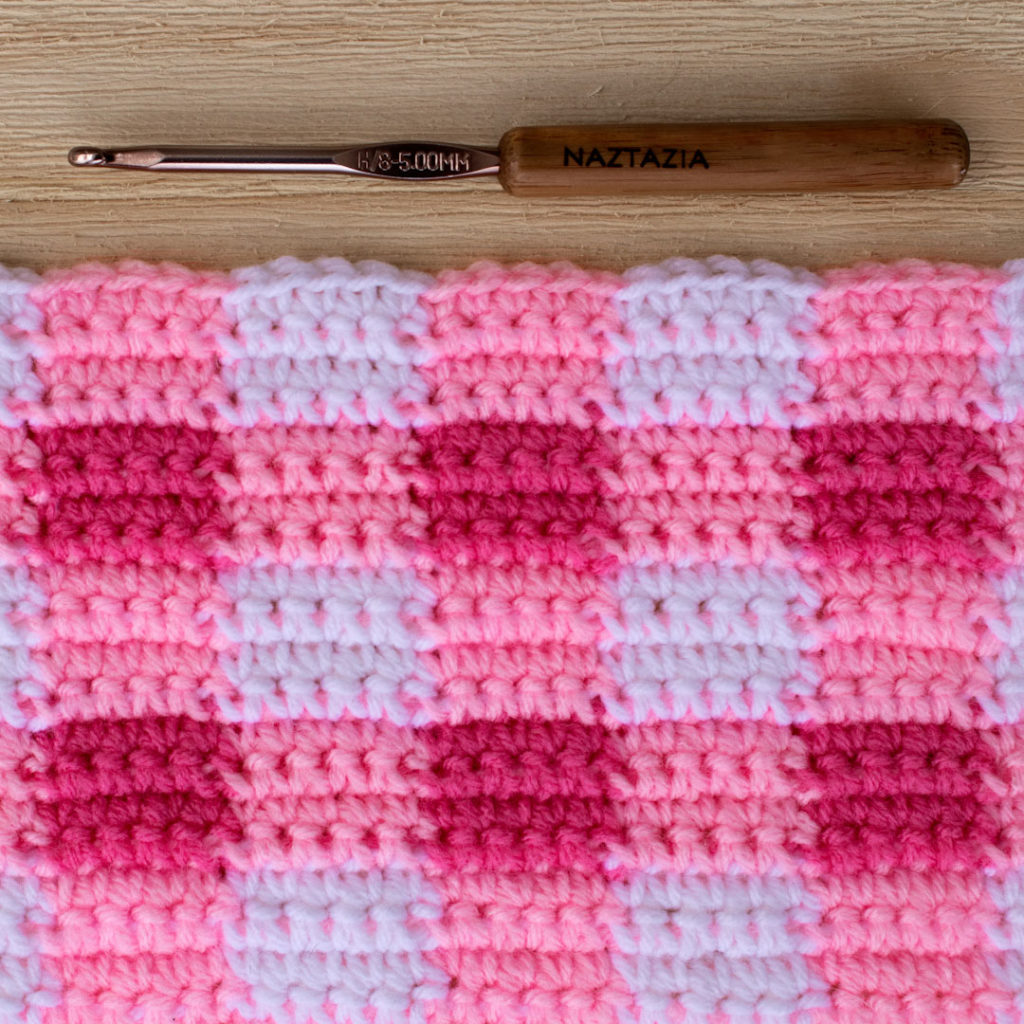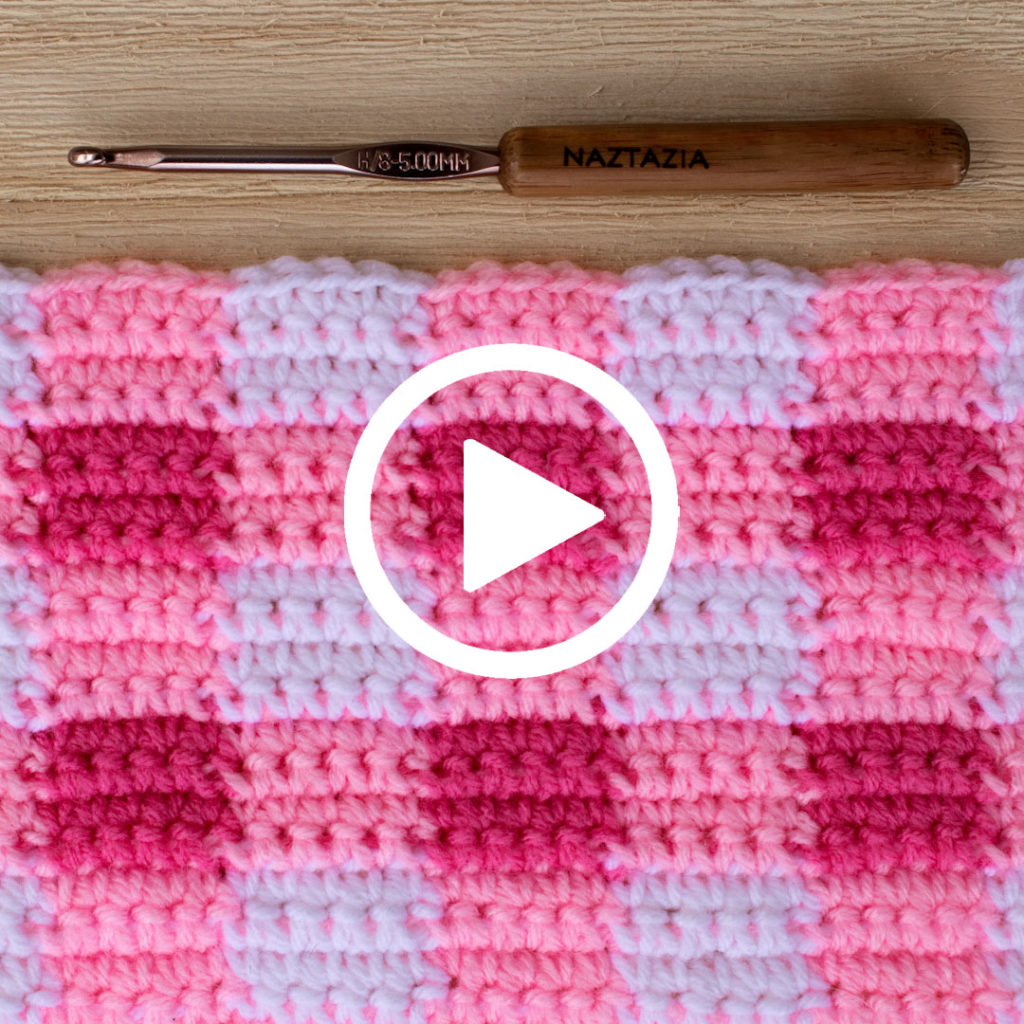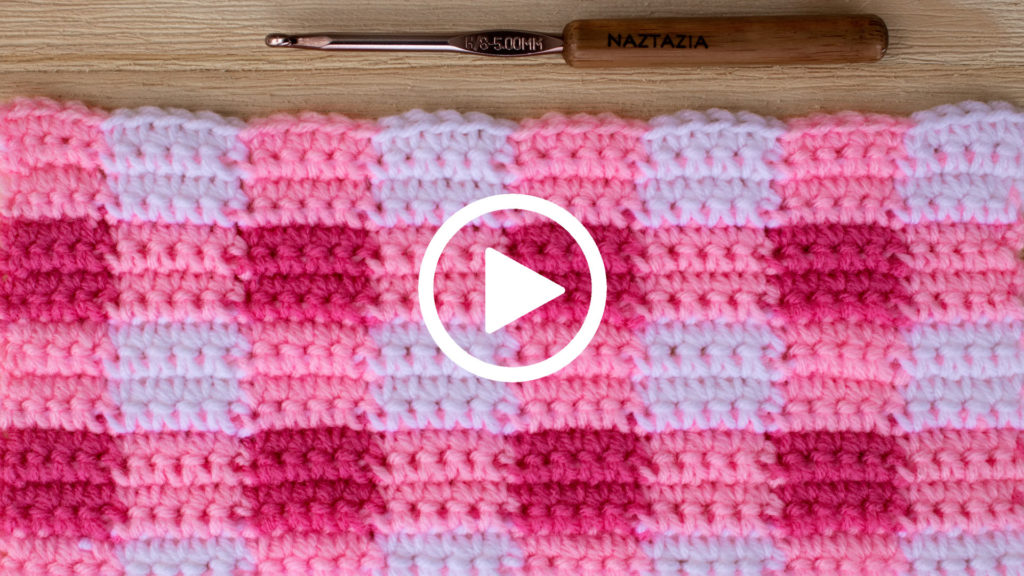How to Crochet Plaid Designs – Gingham, Tartan, Checks, Madras and More
You can create crochet plaid designs to look like fabric gingham, tartan, checks, madras and more with this color changing technique.

About Plaids
In the world of fabric, plaids have been around forever. There are specific plaids like gingham, tartan, checks, madras, and more. In the world of crochet, we can recreate these looks using yarn and a crochet hook.
Gingham is one of my favorite and the sample shown in the video falls under this type of plaid. I also love tartan patterns, and those are very specific designs associated with families. I also like checkered patterns too, especially the black-white and red buffalo check.
There are many good websites out there that explain how gingham differs from buffalo check. Here’s one I really like that breaks down the different type of plaid patterns.

Color Changing Technique
You can look at just about any plaid design and pretty much figure out how to convert the color scheme into crochet. Maybe it’s a one-inch pink block, then a one-inch white block, followed by another one-inch pink block, etc.
Changing colors mid-row can be challenging, especially if you want it to look nice and neat on both sides and minimize the number of ends to weave in once completed.
The key to working with plaids, especially ones that change colors frequently, is to carry the unused or unworked yarn along as you go. Then pick up that yarn as needed to create the next stitch.
Here are three important guidelines to follow:
- Always carry all colors needed for the entire row beginning at the start of the very first stitch. You don’t want some stitches to not have a color underneath it and some that do, since that will inadvertently vary the size or bulkiness of each of the stitches.
- Change to the new color on the last stitch of the previous color. In the case of a single crochet, your last “yarn over, and pull through” will be done with the new color yarn.
- Give a gentle tug to the unworked yarn before using it to correct any loose loops that might form as you carry it along.
Be sure to check out the tutorial video to see how easy this technique really is!

